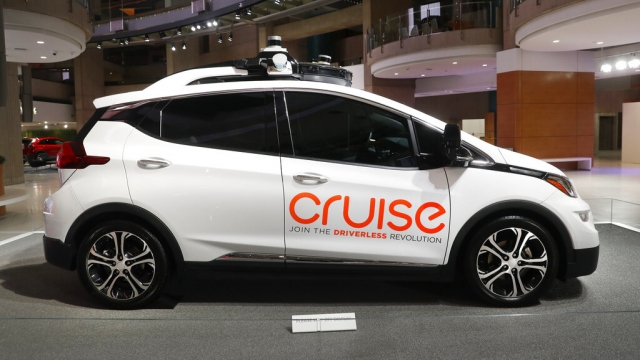Reports of accidents and technology malfunctions have divided the residents of this bustling city over the use of autonomous taxis.
"In San Francisco, just when you think you've seen it all, you know, we see something new, something different," Jeanine Nicholson, Chief of the San Francisco Fire Department, said. "I wouldn't be doing my job as the fire chief if I didn't call this stuff out."
In recent months, autonomous taxis operated by General Motor's Cruise and Alphabet's Waymohave stalled on the streets and collided with objects and vehicles, including first responders.
Last month, a robotaxi was spotted sitting in the middle of a very busy intersection, just hours after the California DMV mandated Cruise to halve its on-road vehicle count, NBC Bay Area reported.
"We saw everything from, you know, a Cruise vehicle driving right into wet, wet cement, wet concrete and getting stuck. We saw them getting into an accident with one of our fire trucks," Nicholson said.
SEE MORE: Person dies after 2 driverless cars block ambulance on way to hospital
Scripps News reached out to both Cruise and Waymo for interviews as part of this story. Cruise did not reply, and Waymo replied, saying it was unable to accommodate our request for an interview at this time.
It's important to note that following the collision Nicholson mentioned with an emergency vehicle, Cruise released a statement in August detailing a preliminary analysis of the incident.
In it, Cruise writes, "The Cruise AV did identify the risk of a collision and initiated a braking maneuver, reducing its speed, but was ultimately unable to avoid the collision," citing challenges with the "confines of this specific intersection," adding that "The AV's ability to successfully chart the emergency vehicle's path was complicated by the fact that the emergency vehicle was in the oncoming lane of traffic, which it had moved into to bypass the red light."
"My team is supposed to meet with Cruise and Waymo separately. I hope that that does indeed happen. And if it is a sort of incident review, that would be super helpful as long as, you know, their engineers are on scene. Are there engineers involved in that conversation so we can work out fixes to the problems?" Nicholson said.
How did autonomous taxis become a hot button issue?
In May 2018, the California Public Utilities Commission, which "regulates and provides safety oversight over for-hire passenger carriers," authorized two pilot programs for autonomous vehicle passenger service. One program had drivers in case of emergencies, and the other program was driverless.
According to an NBC Bay Area investigative analysis of state and national transportation records, autonomous cars have been involved in 532 collisions statewide since June 2018. "In 252 of those crashes, the car was being fully controlled by the test driver," and "the remaining 280 crashes occurred while the car was in full control, known as 'autonomous mode."
Fast forward to August 2023, when the California Public Utilities Commission voted to expand the operating authority of Cruise and Waymo in the city.
"We spoke to the California PUC last month in order to try to get them to hold off on approving just a free for all on the streets. And we were unsuccessful at that," Nicholson said.
Both Cruise and Waymo have pointed to research that indicates that autonomous vehicles are safer than human-operated ones. On their websites, both companies outline their safety philosophy as well as list resources for first responders.
But some folks in San Francisco say they don't feel the technology is where it needs to be in order to operate in the city.
"They are objectively very impressive pieces of technology. I mean, these devices can navigate the streets, but they are not 100% good 100% of the time, particularly when it regards emergency incidents," Aaron Peskin, President of the San Francisco Board of Supervisors, said.
Peskin says he'd like to see a bit more regulation when it comes to how and when these autonomous vehicles can be given the greenlight to operate, since the city doesn't have any jurisdiction on this matter.
"The bigger message here is that the industry and the state regulators really need to hold this new emerging technology to a higher safety standard," Peskin said.
But he says there is a road forward with this technology.
"This is not a 'we want these things never to be deployed.' This is a 'we want them to be deployed in a rational manner.' We are trying to partner with Cruise and Waymo," Peskin said.
It might just be a bit of a bumpy ride.
Trending stories at Scrippsnews.com



